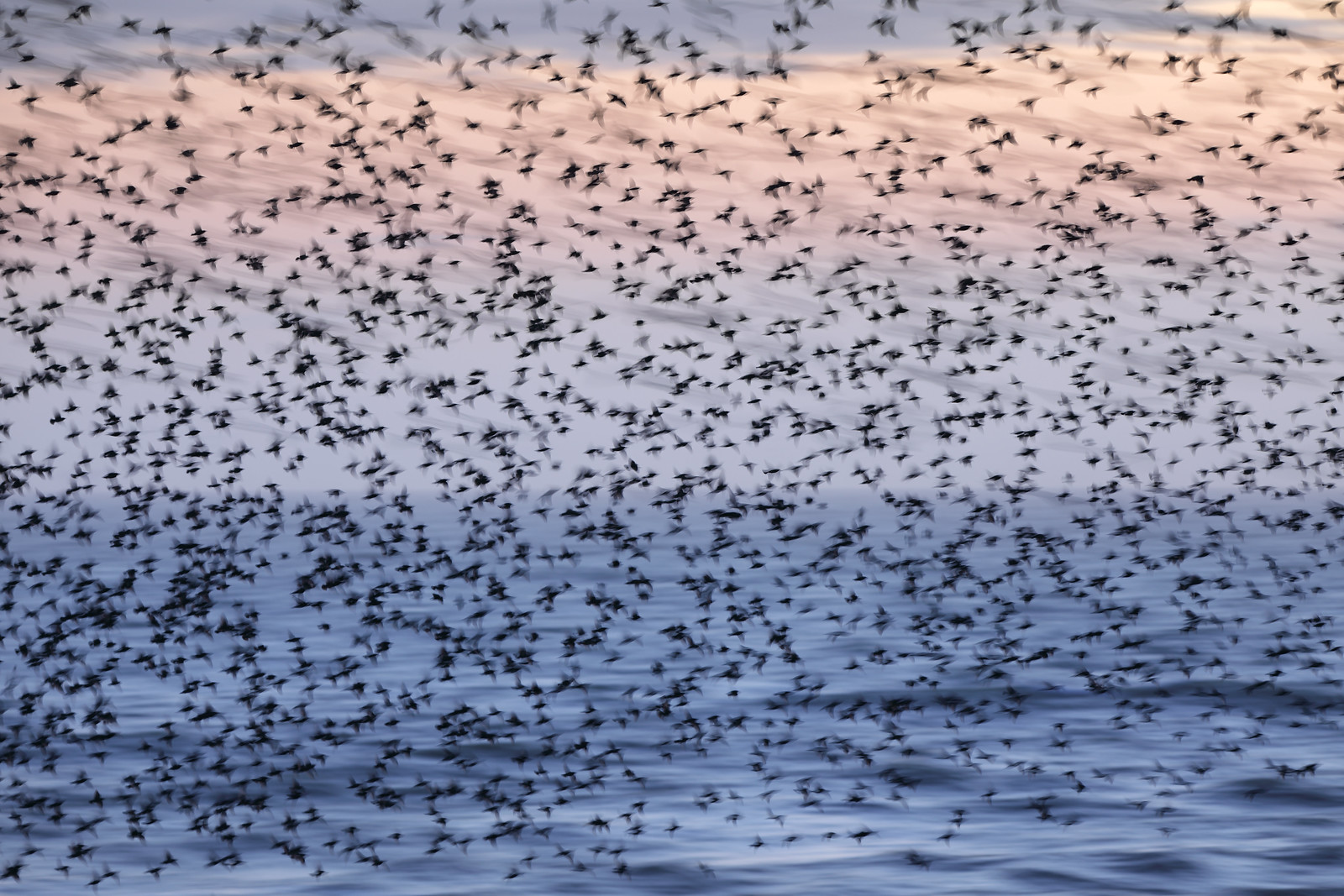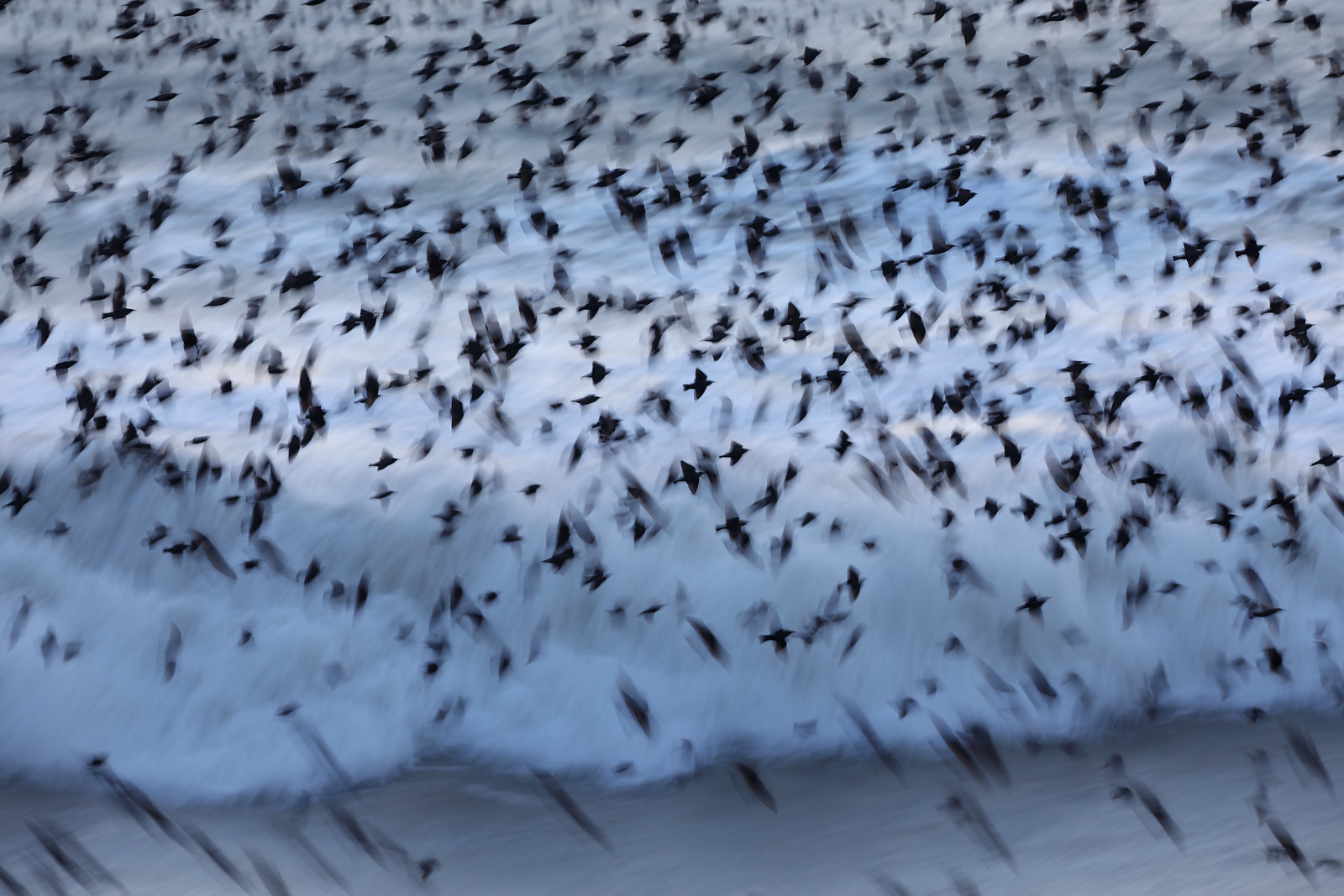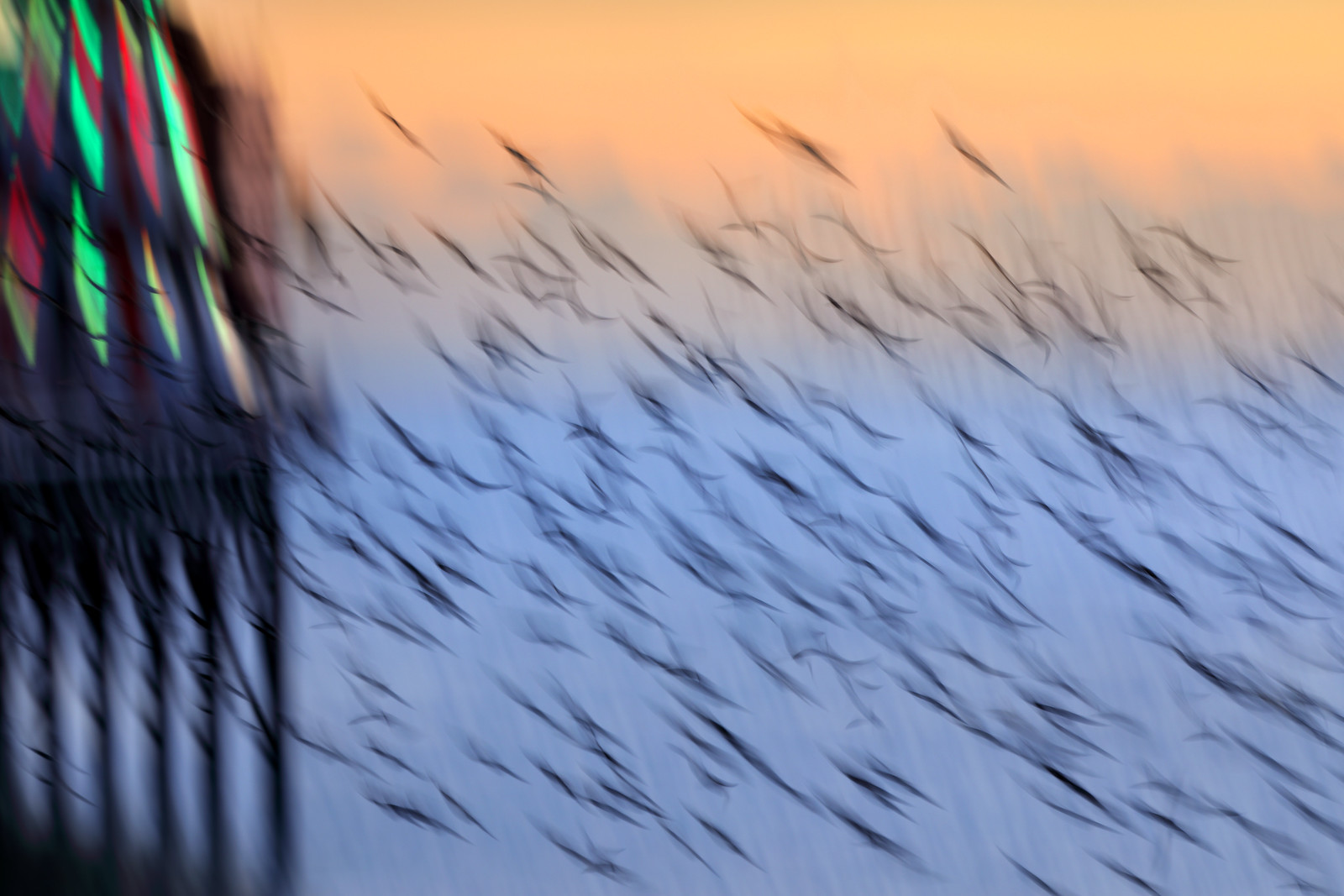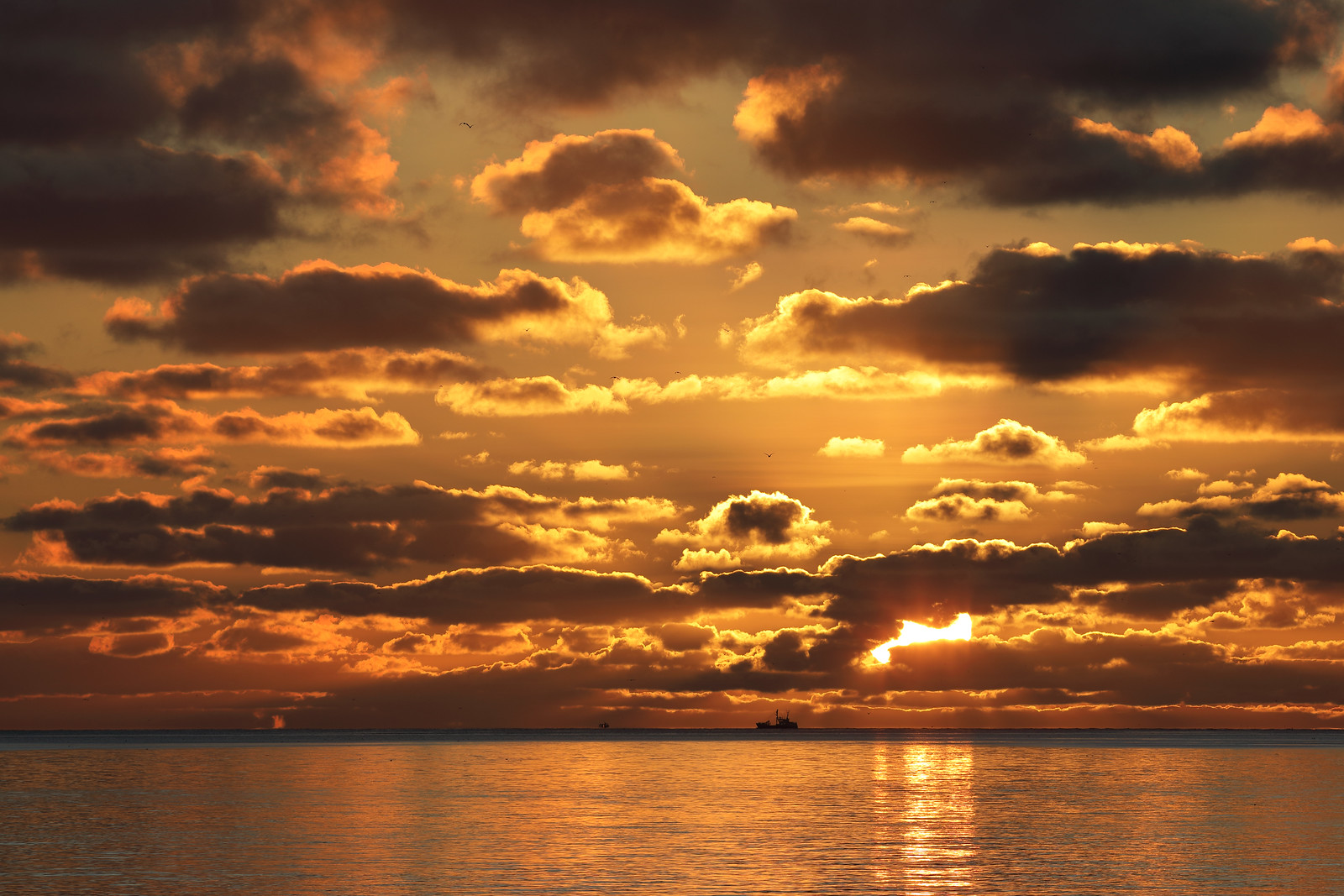Brighton Starling Murmurations - Winter 2019 / 2020
Update: When you've finished this gallery, move onto my project for 2020/21.






Welcome to my winter starling murmuration project. The photo essay is a dying art, so please encourage me to produce more like this, by leaving a comment at the bottom. You don't even have to login. Your name or an alias is better than posting as Anonymous.
Starling murmurations are one of the most mesmerising sights in the natural world. Every winter, starlings escaping sub-zero temperatures in Scandinavia migrate to more temperate European latitudes. The south coast of England is mild throughout the winter, although the weather can be very wet and windy at times. The birds spend daylight hours in parks, gardens and farmland. Every afternoon, they gather in their thousands to form shape-shifting, fluid murmurations, before roosting for the night, underneath Brighton Pier. Anyone in the city centre at around 07:30 in December will be startled by huge flocks of starlings making their way back to their daytime feeding areas. One can almost feel the air being disturbed by the thousands of birds overhead. When they are ready to leave Brghton Pier, the starlings waste little time departing en masse.
After an interval of three years, I returned to photograph the murmurations, getting ready with my telephoto lens 20 minutes before sunset between November and January. I particularly enjoyed using slow shutter speeds to capture abstract images of the birds. Many of my past murmuration shots were taken during golden sunsets, but in the UK, we don't often see direct, low angle sunlight. Dim lighting necessitates the creative use of motion blur techniques. I am limited, only by my imagination.

Starling murmurations are one of the most mesmerising sights in the natural world. Every winter, starlings escaping sub-zero temperatures in Scandinavia migrate to more temperate European latitudes. The south coast of England is mild throughout the winter, although the weather can be very wet and windy at times. The birds spend daylight hours in parks, gardens and farmland. Every afternoon, they gather in their thousands to form shape-shifting, fluid murmurations, before roosting for the night, underneath Brighton Pier. Anyone in the city centre at around 07:30 in December will be startled by huge flocks of starlings making their way back to their daytime feeding areas. One can almost feel the air being disturbed by the thousands of birds overhead. When they are ready to leave Brghton Pier, the starlings waste little time departing en masse.







Starling numbers at Brighton Pier were down in December 2019, although more arrivals in January boosted murmuration sizes. This could be due to mild weather in Scandinavian countries, which recently recorded record high winter temperatures, but the overall population is in decline. Dry summers and the use of pesticides is killing their invertebrate food sources. We already know that insect numbers are dropping at an alarming rate. The future of starlings depends on our willingness to recover insect populations by eliminating pesticide use. Birds and predatory insects are of course, an effective natural form of pest control. Should insect populations collapse, many species, including us, would be at risk of mass extinction.
No-one really knows why starlings form murmurations, but the best explanation is safety in numbers, sharing information about prime feeding sites and to keep warm over long winter nights. Each starling shadows seven of its neighbours by constantly monitoring its position relative to them. The result is a fluid movement. Should a bird of prey attempt to intercept and capture a starling, the predator will simply pass straight through the murmuration. Sometimes, sections of the murmuration break away. The detachment occurs when a random bird moves slightly out of formation and a number of birds already shadowing each other moves with the divergent flow.
No-one really knows why starlings form murmurations, but the best explanation is safety in numbers, sharing information about prime feeding sites and to keep warm over long winter nights. Each starling shadows seven of its neighbours by constantly monitoring its position relative to them. The result is a fluid movement. Should a bird of prey attempt to intercept and capture a starling, the predator will simply pass straight through the murmuration. Sometimes, sections of the murmuration break away. The detachment occurs when a random bird moves slightly out of formation and a number of birds already shadowing each other moves with the divergent flow.
We enjoyed a spectacular sunset on December 3rd, but if the weather is fine, starlings tend to arrive at the pier later, meaning I seldom get the chance to use the sunset as a background. If the weather is cloudy or rainy, the murmurations gather 20 minutes before sunset. My theory is that starlings maximise feeding time in good weather, staying out later. It may also be easier for starlings to tell the time of day, if the sun visible.
January 9th and 10th produced two rare opportunities this winter to photograph the murmurations in sunshine. Heavy contrast meant having to exclude the solar disk from images. I found pointing the lens slightly away from the sun worked well, capturing the iridescence on feathers as birds passed through direct sunlight.
January 9th and 10th produced two rare opportunities this winter to photograph the murmurations in sunshine. Heavy contrast meant having to exclude the solar disk from images. I found pointing the lens slightly away from the sun worked well, capturing the iridescence on feathers as birds passed through direct sunlight.
Visiting Brighton Pier at the end of very short winter days over the last few months has certainly kept me occupied. It has lifted my spirits and kept me from giving up, particularly in these dark political times. I won't pretend that the general election result on 13th December wasn't a severe shock. Thanks to the brilliant analysis of LSE anthropologist David Graeber, I can begin to understand what actually happened and why.
The days are getting longer, and it is time to focus on getting physically fit, ready for the spring. I am already enjoying cycle rides in the sunshine along to Saltdean and back. And I can't wait for the bluebells to appear. Our time will come. Take care.
Follow me on Facebook: www.facebook.com/alanmackenziephotography





















Comments
I am going to Blackpool Pier - can you suggest a shutter speed to mcreate them blur?
Thanks
Stan
-Kumar